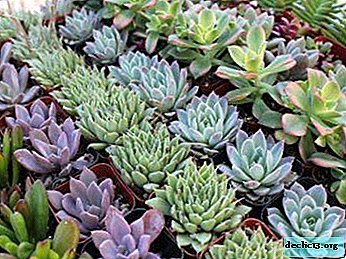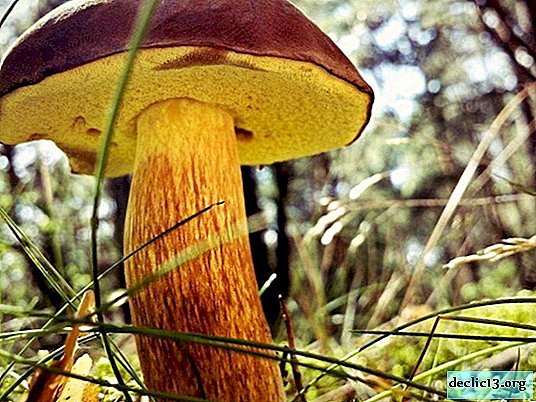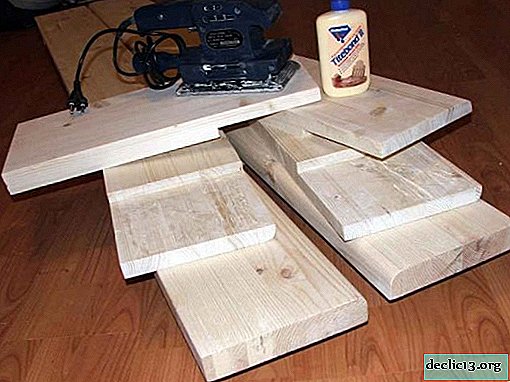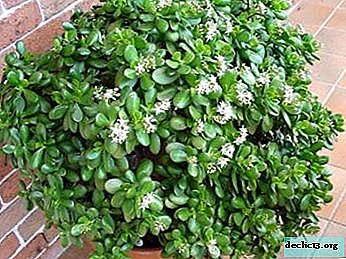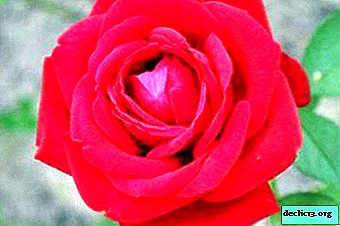Everything about growing fuchsia and subsequent care in the garden: detailed instructions, also possible diseases

Luxurious, spectacular and bright fuchsia is a real "precious decoration" for a home or garden. The plant was bred more than 3000 years ago, later many hybrid varieties were created for growing in greenhouses.
The bush grows in ampel form or in the form of a bush. And each variety variety has its own requirements for care and lighting.
Next, we will tell you what are the features of fuchsia care in the garden. And also, we will consider in detail the possible diseases of this flower.
How to grow: features of the procedure
The biological description of the plant is a compact small tree on which there are reddish flexible shoots, medium-sized lanceolate leaves, numerous inflorescences of different shapes and colors. For growing in the garden, varieties with large and direct shoots are most often taken.
Each type of fuchsia has its own requirements for care and lighting, but a common feature is the fear of direct sunlight. Bushes need to be planted in shaded areas. An exception is the aloha and coral varieties, which retain a luxurious color even under the scorching sun, but require careful care. Ampel bushes are preferable to grow in the garden in a pot or in a flowerpot.
Reference. When gardening, it is necessary to carefully monitor the condition of the bush, periodically update the woody varieties to young.The perfect neighbors for fuchsia in the garden are begonia, balsam or ivy.
Detailed instructions
When choosing a place for a plant, one should give preference to places that are well lit in the morning and evening, and shaded during the day. Fuchsia should be planted in open soil not earlier than May. The bush is characterized by rapid rooting and strengthening - the plant will bloom in 2-3 weeks after planting. The plant does not tolerate cold. For many years of cultivation, fuchsia is best grown in pots, transferring to the street at a warm temperature.
Composition of soil and fertilizer
 Sow seeds in a light and nutritious soil. You can buy a ready-made soil mixture or make it yourself from turf land, peat and sand (proportion 3: 2: 1). It is advisable to disinfect the soil - hold it in the refrigerator or in the cold, pour over boiling water. Seeds are planted in such a soil mixture for further transplanting seedlings to the garden plot.
Sow seeds in a light and nutritious soil. You can buy a ready-made soil mixture or make it yourself from turf land, peat and sand (proportion 3: 2: 1). It is advisable to disinfect the soil - hold it in the refrigerator or in the cold, pour over boiling water. Seeds are planted in such a soil mixture for further transplanting seedlings to the garden plot.
Planting seedlings in the garden is necessary in fertile land with a neutral reaction. Improves the quality of the soil in the area by filling the top layer of a mixture of peat, perlite and sand. It is also advisable to add clay - it will contribute to the retention of nutrients.
The preferred soil composition in the garden should include:
- turf mix or leafy soil;
- peat;
- settled humus and compost;
- sand.
Among the preferred fertilizers are biological top dressing. It is allowed to bring in after the plant has taken root and released full foliage. For these purposes, take liquid fertilizers based on humus, fertilizing with nitrogen, phosphorus, potassium, zinc. Feed the soil must be alternated with surface spraying of leaves against pests (a weak solution of Previkur, potassium permanganate).
Preparation and germination
The main condition for high-quality germination is the purchase of fresh seeds from trusted producers. You need to plant seeds in the soil in February-March, then seedlings can be planted in open ground in mid-May. The capacity for fuchsia should be spacious. A suitable container is a transparent container.
Openings for drainage should be made at the bottom of the tank. Next, make a layer of expanded clay or pebbles - seedlings will not die from stagnation of water. Then you need to pour the soil mixture, compact it, leave 2-3 cm to the edge of the container. To prevent the formation of mold, the earth must be sprayed on top with potassium permanganate from a spray gun.
Deepen the seed with your finger by 3-5 cm. Cover the container with cellophane or a lid, be sure to leave room for air. Put on a warm windowsill. The optimum temperature is no higher than 22 degrees. After the appearance of the first shoots, once every 2 days, drip water on it, daily - spray air with water from a spray bottle.
How to care?
 Among the basic rules is the proper watering of seedlings and adult plants. Fuchsia requires abundant but moderate watering. It is preferable to carry it 1-2 times a week. You need to make water in the morning. Between watering, it is imperative to spray leaves from the spray gun, since the plant loves moisture. If the bud wilted, it must be cut in a timely manner.
Among the basic rules is the proper watering of seedlings and adult plants. Fuchsia requires abundant but moderate watering. It is preferable to carry it 1-2 times a week. You need to make water in the morning. Between watering, it is imperative to spray leaves from the spray gun, since the plant loves moisture. If the bud wilted, it must be cut in a timely manner.
There are some features of care. In the garden "precious beauty" allot a place protected from the sun and draft. If all conditions are met, the plant will transform and delight in color: the color will become juicier, lush greenery will grow, the bush will strengthen.
The optimum temperature when growing outdoors is 21-23 ° (the indicator should not be higher even in summer). If the level of the thermometer rises to 26-28, fuchsia discards the leaves and begins to fade.
Following actions
The basic rules of care are choosing the right place, watering and humidity. If the grower makes mistakes, the following symptoms indicate this:
- The leaves fall off and the flowers wither - fuchsia does not get enough moisture.
- The entire bush withers - an excess of moisture is observed in the soil, the roots begin to rot.
- Brown spots appear on the foliage - regulation of the frequency of irrigation is required, as the bogging of the soil occurs.
Plant care involves the obligatory application of organic fertilizers - Mullein or humus of weak concentration, ash. During the formation of buds and during flowering, the introduction of instant fertilizing is required.
On a note. It is necessary to carry out high-quality trimming of fuchsia. To do this, dry or weakened shoots should be removed, and actively growing tops should be shortened by half.Possible diseases: general information
The advantage of the plant is its low susceptibility to disease. Most often, signs of powdery mildew may appear on the bush. Fundazole will help to cope with the disease (see dosage on the package). Other possible problems include gray or black rot. The affected part of the bush becomes watery, a whitish coating forms on the surface of the foliage. The fight against diseases consists in the timely removal of dead parts and the processing of chemical disinfectants.
Bush fuchsia can affect pests - aphids, spider mites, whiteflies. Signs of infection of aphids are a pale color and twisting of foliage, curvature of stems, non-opening of buds. Processing the leaves with alcohol and subsequent spraying with any drug from the insecticide group will kill the pest.
If humidity is low, fuchsia is infected with a spider mite. Symptoms - speckles and dots on the leaves, their discoloration and subsequent decay. Pest control also involves the treatment of insecticides.
Fuchsia is a beautiful flower that is mainly grown in pots, flowerpots and decorative containers. When growing in the garden, it is important to adhere to special rules of care. Sow the seeds in the tank in February, and plant seedlings in open ground in May. For a plant, indicators of soil fertility and moderate humidity are important. You can recognize the first signs of fuchsia diseases in the garden by the leaves.
Useful video
Outdoor cultivation of fuchsia:

